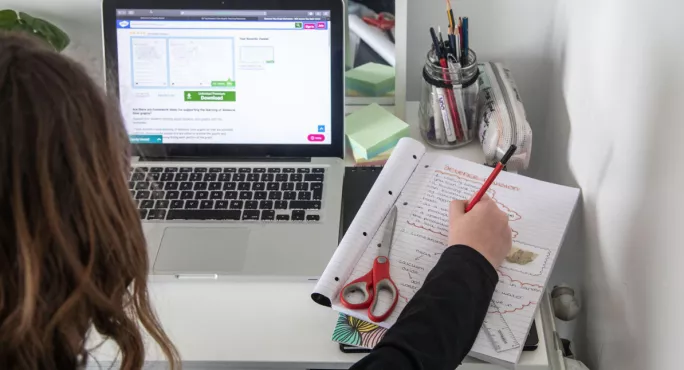Being forced to learn in a different way has been tough for some of our students, while others have absolutely thrived.
If the lockdown has taught me anything, it’s that our teaching methods have to evolve to make sure that everyone has an equal chance of succeeding. I have seen some students who cannot bear to be in a classroom completely transformed when given the opportunity to work more independently. I’ve also seen the opposite: motivation to learn is much harder to get a grip on when the consequences aren’t immediate.
I’ve been learning throughout lockdown as our CPD has been rolled out online, and I’ve been delivering the training as well as completing it. I realised pretty quickly that if I was not in the room with a trainer, I found it very hard to concentrate.
As a pupil, from primary to PGCE, I always found that if I was in front of a teacher and could interact with them, I was great. I found homework and coursework easy enough, never handed anything in late and got consistently good grades.
News: 3.1K college staff put at risk of redundancy
More: The 10 commandments of remote CPD
Also by Kirsty Walker: How to get the Ucas process right
And yet, in my recent CPD, I become that student who can’t sit still, can’t focus on what they’re doing and keeps being drawn back to other distractions. I’m my own worst nightmare.
Online learning: Keeping students engaged
To see how our students, and we, are going to learn online, we need to look at computer habits, not classroom personas. On my laptop, I have at least 10 tabs open, and I have to work through them, left to right. Currently, they are: email, Teams, ProMonitor, a report I need to write, a one-to-one I need to write up, a quiz I was trying out for a class, a meeting I am currently in where someone is saying, “Kirsty, Kirsty, have you frozen?”
I cannot just do one thing online. If I was in a classroom, however, I would be focused on what was going on completely. I would be engaged and asking questions. I doubt anyone would suspect that I had two different ways of operating depending on the situation.
Early on in the lockdown, my team had a mandatory training session that was five hours long, plus a lunch break. We were expected to be on screen and visible at all times, and I felt like a caged animal. My natural instinct to glance away from the speaker, to allow myself to think without staring at a screen, and to take breaks when I needed to, was completely suppressed. It was only four months ago, and, for the life of me, I could not tell you what that training was about. I have zero recall, I can’t even remember the subject.
And so, when I devised training, I did it as a 20-minute talk through a PowerPoint, then five activities that participants chose from. Each activity was a different format - a video, an article, a quiz, a podcast, a social media feed. Then people could book in with me for a one-to-one to discuss the training, if they wanted.
I designed training that I would really like to do, and it proved very popular. I rolled this out with students, too, giving them options of what to do and a week to do it. To discuss the work with me afterwards, I gave them the options of a one-to-one video chat with me, a Google form to fill in, a phone call or an instant messenger Teams chat. This also helped me because 20 Zoom calls would drain my batteries no end and I would be a jabbering husk by the end of it. My instinct to please myself inadvertently helped my students, too.
Kirsty Walker teaches at a college in the North West of England

